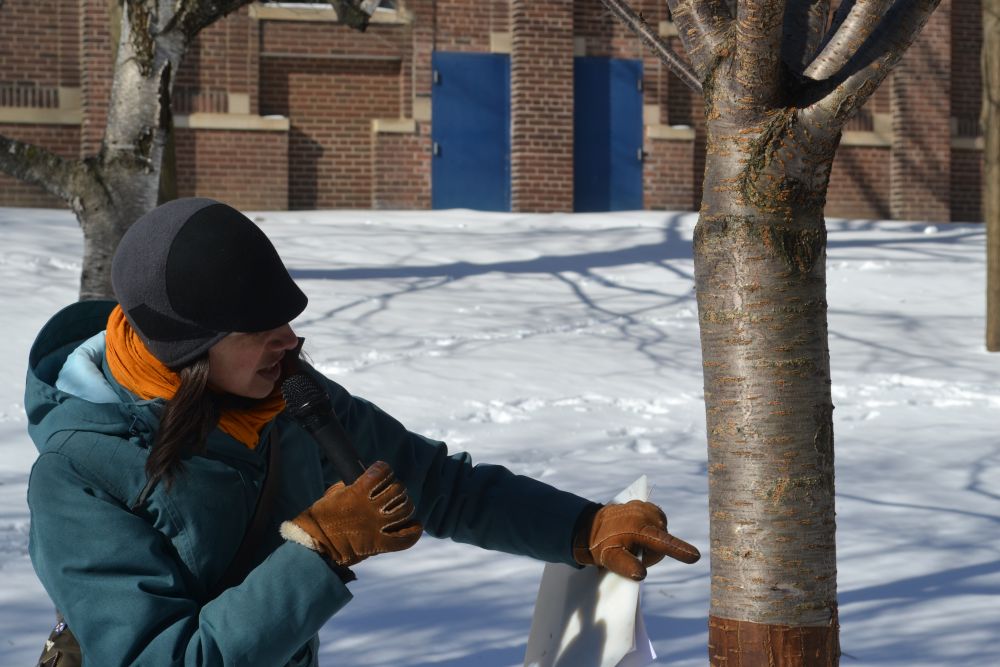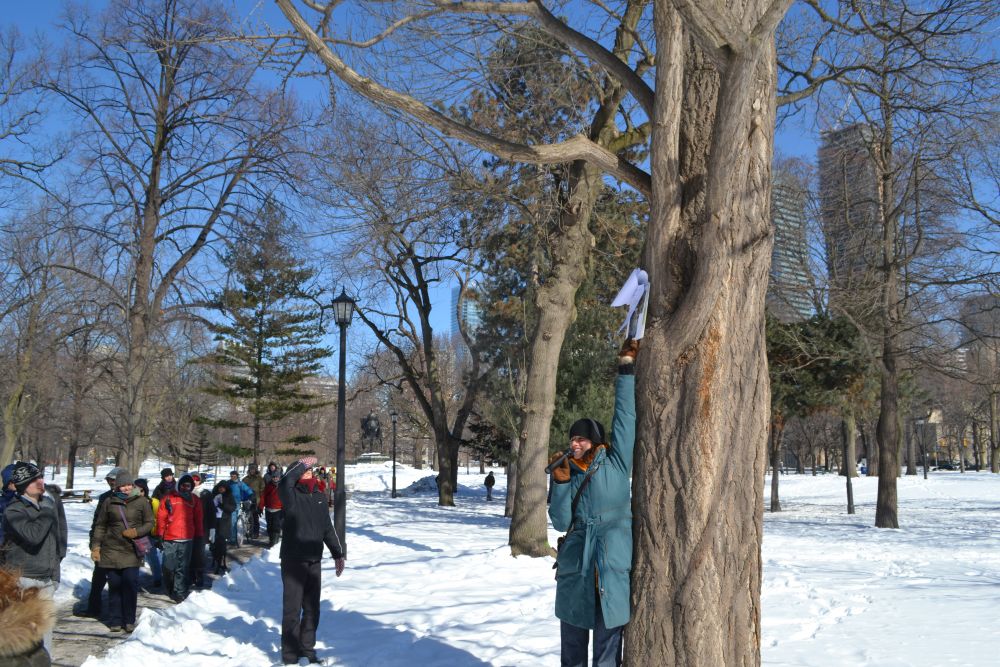Tree identification, as tour leader Jenia Faibusovitch explained, can be tricky in the winter months when we don’t have clear cues like leaves to help us. But it can be done if you know what to look for.
Some of the main features that provide clues include bark colour and texture, branching patterns, buds, twigs, needles and any fruit or leaves remaining on the trees. By taking a short walk through the courtyards around the Royal Ontario Museum, the University of Toronto campus and Queen’s Park, participants were shown over 20 species of trees and the unique features that can help identify them.
We started looking at the distinguishable bark of Betula (birch) and Prunus (cherry) species. Small flecks and stripes on the bark of these trees, known as lenticels, are the first clue in identifying these tree families. From there, bark colour can help distinguish further. We also examined different textures of bark: thin and papery like the paper birch (Betula papyrifera) or cracked and flaky, like the horsechestnut (Aesculus hippocastanum).

We then moved on to examining the branching patterns of trees and how they are arranged around a main branch or trunk, either opposite or alternate. We learned a great acronym for remembering the oppositely branched trees: MADHorse (maple, ash, dogwood, horsechestnut) – helpful right?
Several other examples were used to show how even the buds of trees are unique. For example the very large, fuzzy buds of the magnolia (Magnolia spp.), the round, red buds in clusters on a silver maple (Acer saccharinum) or the narrow, long and pointed buds of the beech (Fagus spp.).

The evergreens were an interesting group as the trees still had their needles and cones. Identifying trees in this group involves looking at how many needles are in each bundle (fascicle), needle length, bark and overall tree shape.
Some of the standouts of the day were the uncommon Kentucky coffeetree (Gymnocladus dioicus), identified by its unique seed pods, and a beautiful London planetree (Platanus x acerifolia), showing multicoloured bark with large, flaking plates and fruits shaped like pom-poms.

We ended the day on an important note, looking at two ash trees (Fraxinus spp.). One had been vtreated for the Emerald Ash Borer and the other had not. An easy way to identify the latter was the presence of D-shaped holes bored in the tree bark, woodpecker damage and an overall unhealthy appearance - an unfortunate, but important way to help identify ash trees.
The LEAF Winter Tree Identification Tour was a fun and educational day - a great way to connect with nature during the frigid months!
Kristen Grittani has a background in Biology from McMaster and Ecosystem Restoration from Niagara College. She has worked in a variety of conservation settings, including bird monitoring, tree planting and invasive species management. She has a passion for native species and building backyard habitats like gardens and bird boxes. She is currently pursuing her interest in forestry and hopes to continue advocating for the importance of a healthy urban forest by volunteering with LEAF.
For more photos from this tour, check out LEAF's Facebook page.
LEAF's Tree Tours are supported by Ontario Power Generation.
